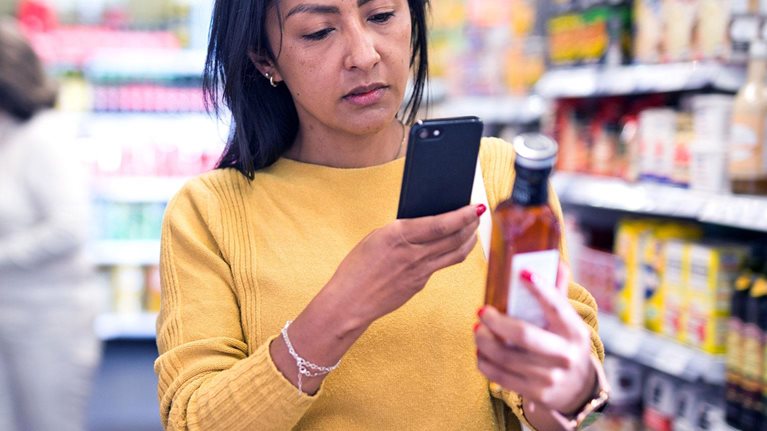Latin America’s grocery retailers are finally on firm ground again. After several volatile years—with grocers battling everything from the COVID-19 pandemic to inflation and rising joblessness—the sector showed signs of stabilizing in the first half of 2024, leading to increases in spending.
Yet challenges persist. Our latest report finds four primary trends grocery retailers across Latin America must respond to: consumers’ continuing search for value, an ongoing transformation of the channel mix, the rapid ascent of private-label brands, and the resumption of accelerated growth in the e-commerce channel. Many leaders have already begun adapting to these shifts by evolving their strategic positioning, transforming their core by adopting analytics and digital technologies, and seeking ecosystem moves to create new sources of income. Leveraging the power of data will be of the essence for retailers to remain competitive in this new era.
Four trends driving grocery retail
Sales of consumer goods have increased across Latin America for eight straight quarters, with all countries in the region (except Argentina and Chile) experiencing volume growth in the first half of 2024. Consumers are making smaller purchases more frequently and are diversifying their shopping channels, with e-commerce (up 44 percent), convenience stores (32 percent), and discounters (26 percent) growing the most in the first six months of this year and supermarkets showing signs of recovery. These reflect the evolution of grocery retail in 2023 and the following four primary trends driving consumer behavior.
1. The search for value persists
Since 2020, purchasing power for consumer goods across the region has declined by about 25 percent, the result of inflation increasing at a CAGR of 6 percent while GDP grew by only 1 percent annually.1 The consumer response to weakening purchasing power has been to buy smarter, using a mix of channels and seeking greater value, cheaper products, and smaller presentations. Consumers are also increasingly prioritizing essentials, such as food and beverages, over more discretionary products, such as personal care (Exhibit 1).

Yet consumers are also shifting categories in an interesting way. While all are prioritizing essentials, Latin American consumers overall reduced spending in the “mainstream” tier of brands—brands with a price index between 80 percent and 120 percent of a category average—while increasing spending in private-label, economy, and premium brands, which have prices greater than 120 percent of the category average (Exhibit 2). This suggests that consumers are cautious but selectively splurging and points to an opportunity for consumer goods brands to look for new consumption occasions or ways to grow customer loyalty as behavior shifts.

2. Value and convenience are driving channel transformation
Consumer demand for value and convenience is slowly transforming preferred retail channels across Latin America. Modern channels—which includes supermarkets, hypermarkets, discounters, wholesalers, and health and beauty stores—is emerging as the primary choice for household consumption in a majority of the region, commanding a share of value of more than 50 percent in most countries (Exhibit 3). While almost all consumers use traditional channels, which remain dominant in Bolivia, Honduras, and Peru, small stores’ share of household spending dropped 1.5 percentage points from 2022 to 2023, and modern channels’ share rose 1.8 percentage points during the same period. E-commerce’s share has been flat, though online sales have increased in six of the 14 countries we analyzed.

While value and convenience are the primary factors behind the broad shift to modern channels, more frequent purchasing is driving increased spending. This, in turn, is promoting greater channel loyalty: between 2022 and 2023, consumers increased the frequency of buying in modern channels by an average of 7.0 percent, while trips to traditional stores fell 2.9 percent. At the same time, consumers increased their average annual spending at modern formats by 15.6 percent to $362, and spending at traditional stores rose only 10.9 percent to an average of $322. Modern channels now lead in all consumer categories except for beverages, with discounters consistently being the format with the highest growth across Latin America (Exhibit 4). Notably, in countries where discounters’ market penetration exceeds 75 percent, the format’s share has accelerated to comprise more than 25 percent of total spending, compared with total spending of just 3 to 7 percent in countries where penetration is below 75 percent. Our analysis finds that in countries with a higher share of discounters, clients shop there more frequently—leading to higher total spending per buyer, on average.

3. Private-label brands continue to gain share
Private-label brands are also profiting from consumers’ ongoing search for value. As the perception of private-label brand quality improves and such brands become more widely available, shoppers are rapidly moving beyond buying only traditional home-care items from private labels to also buy nonperishable food, dairy, and personal care items (as well as beverages, to a lesser extent) (Exhibit 5). Progress of private-label share differs by country: Colombia (around 32 percent) and Mexico (around 28 percent) are the largest private-label brand markets in terms of sales value, and spending on private-label brands jumped by almost 300 percent in Ecuador between 2019 and 2023. Brazil is the only market where sales decreased, likely due to discounters not expanding as rapidly and the country’s large number of wholesalers that offer leading brands at lower prices.

The places where consumers buy private-label brands mirror broader shifts in consumption habits across Latin America. Private-label brands’ share in discount stores has increased by two percentage points over the past five years, reaching an average of 25.9 percent across the region (Exhibit 6). In Colombia and Ecuador, private-label brands are emerging as dominant across all categories at discounters, perhaps pointing to potential further growth in other countries.

4. The digital channel returns to growth
While modern channels are emerging as the primary shopping channel and traditional channel remains almost ubiquitous, headline figures suggest that e-commerce barely registers: across Latin America, it accounted for just 1 percent of total home consumption by sales value in 2023. Yet this figure masks significant underlying growth, with digital sales rebounding in 2023 and quadrupling in size over the past five years (Exhibit 7). Personal care is the category with the highest online share and growth, followed closely by nonperishable foods and beverages and then by dairy products and home-care items.

Greater average spending (an increase of 11 percent from 2022 to 2023) and market penetration (which increased by two percentage points during the same period) are driving digital-channel growth. This translated to a 21 percent increase in regional sales value to $2.4 billion in 2023, led by Brazil (sales of $762 million), Mexico ($542 million), Argentina ($409 million), and Chile ($392 million). Much of this e-commerce momentum is related to faster growth by e-retailers and their platforms (Exhibit 8).

How leading grocery retailers can respond
Top-performing grocery retailers are already responding to these somewhat dramatic shifts in consumer behavior across the region, with their actions focused on three dimensions: evolving their strategic positioning, transforming the core of their business through digitalization and the adoption of technology, and looking for adjacent businesses to expand revenue sources.
- Evolving their strategic positioning. Retailers are altering store formats to tailor their value propositions to customer needs, principally by expanding with smaller stores offering essential items in high-traffic areas; providing a limited assortment; and adding space in existing stores for new categories and services such as ready-to-eat meals and financial services. They are also developing private-label brands to offset the expansion of discounters.
- Transforming the core of their businesses. Leaders are leveraging data and AI across the retail value chain, from commercial and merchandising to marketing and customer insights, operations, and support functions. These efforts are helping to increase sales and margins and underpin efforts to address consumers through both omnichannel offerings and greater personalization. Companies are also seeking efficiencies in their value chains by generating cost savings in store operations, distribution networks, and sales, general, and administrative expenses.
- Expanding into adjacent businesses. Companies are building ecosystems to diversify into new businesses, from marketplaces to retail media networks. These efforts are allowing grocery retailers in Latin America to remain closer to customers and their preferences while expanding the range of goods and services available to engender greater average spending and loyalty.
While the region’s economic stabilization means retailers have a chance to catch their breath, responding to the four trends driving grocery retail in Latin America requires constant action. In particular, it calls for retailers to respond thoughtfully and strategically by leveraging the power of data—a critical differentiator for not only surviving but also thriving in this new era.


